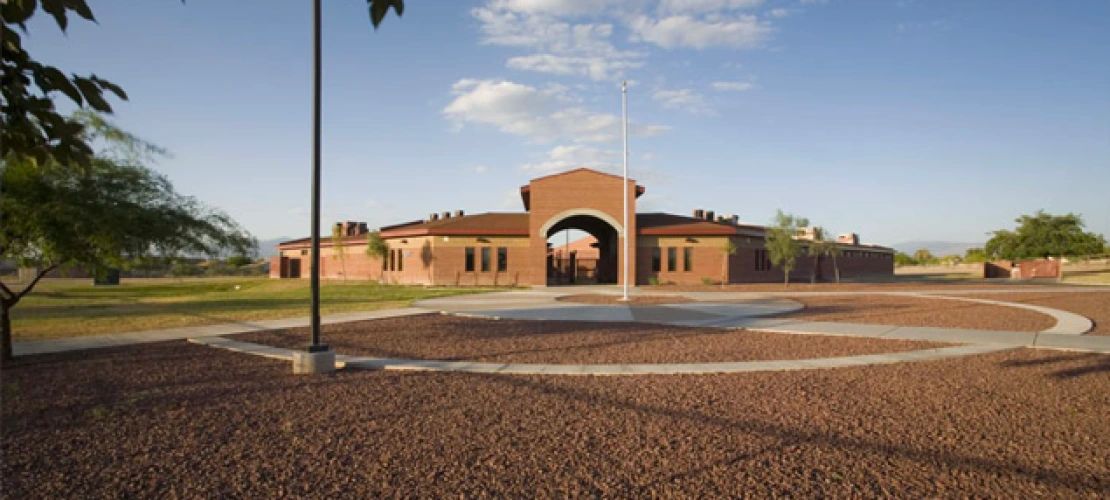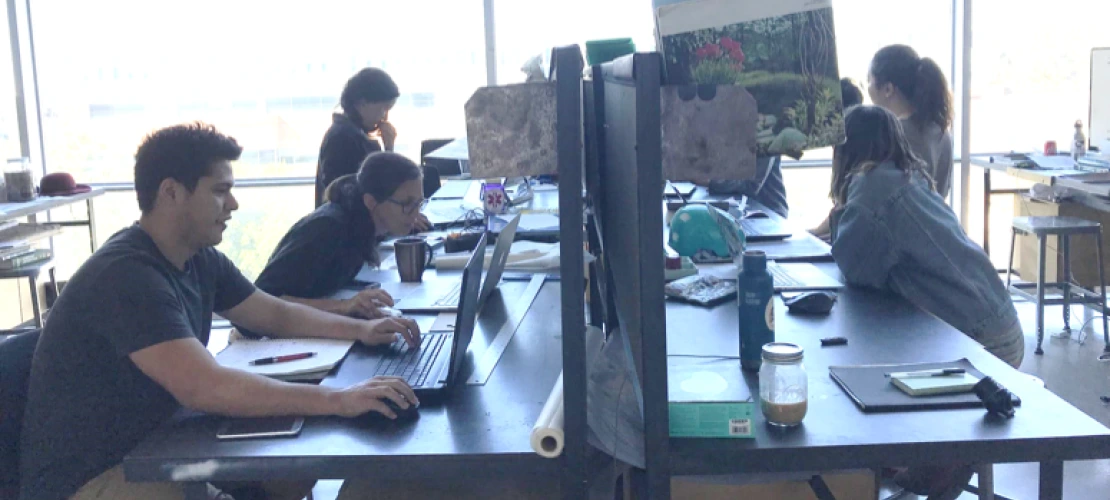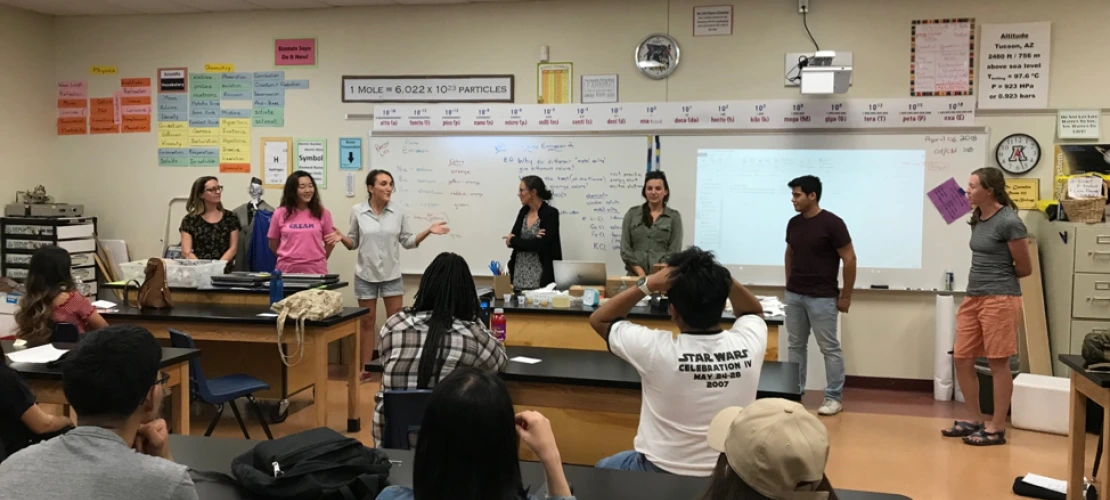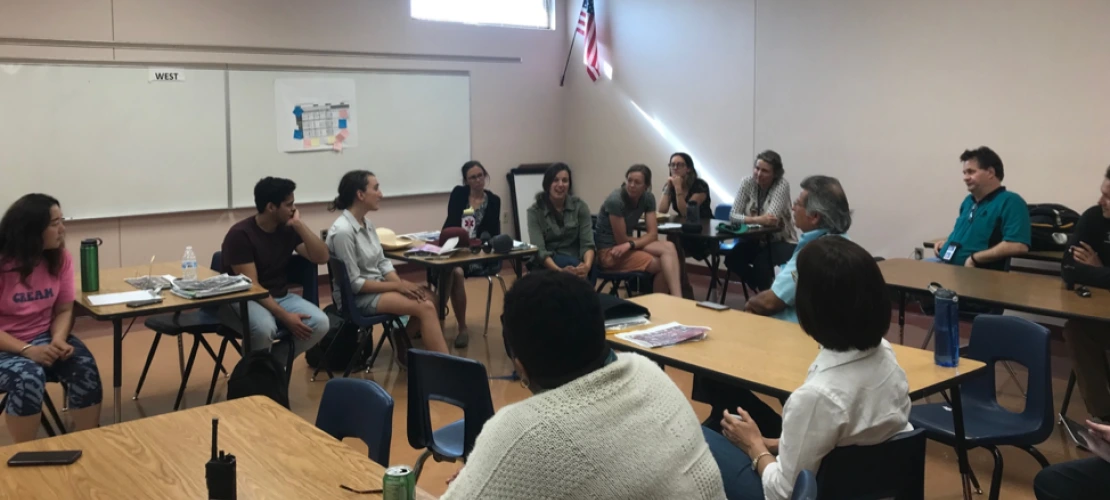By Isaac Palomo
04/11/18 06:23:pm
Landscape designers seek to create landscapes that entail sustainability and ecological and socioeconomic resiliency. However, in a rapidly urbanizing world, creating such spaces has become cumbersome. Economic and social complexities in addition to climate change have resulted in significant risk accumulation and uncertainty for several cities across different regions. Especially in the case urban development, neighborhoods with insufficient or inadequate infrastructure in the built environment, have a higher risk of impacts during catastrophic events.
Take for example the community surrounding the STAR Academic High School, located in the south side of Tucson, Arizona. This community usually experiences severe flooding during heavy storm events and suffers from extreme heat during periods of above-average temperatures. This neighborhood lacks adequate infrastructure that could alleviate these impacts, such as green infrastructure (GI) – or using the natural landscape to infiltrate stormwater creating greenspace that can reduce temperatures. Therefore, this area fails to cope with excessive flooding and heat; which translates into more energy used in buildings and subsequently higher energy bills, and expensive damage to the urban infrastructure, further augmenting the economic stress of a low-income community. This positive feedback represents an environmental justice issue, where disadvantaged populations suffer disproportionately the impacts of climate change and urbanization. A group of researchers at the University of Arizona (UA) in partnership with local organizations are studying this environmental justice issue in their project “Tucson Verde para Todos.” This project is funded by the Agnese Nelms Haury Program in Environment and Social Justice and the University of Arizona Green Fund.
The LAR 511 Design Studio II class at the UA Master of Landscape Architecture (MLA) is also working to address this environmental justice issue in Tucson. The STAR campus project was introduced by Doctor Adriana Zuniga-Teran, Staff Scientist with Udall Center for Studies in Public Policy and Senior Lecturer at the School of Landscape Architecture and Planning to Professor Bo Yang’s LAR 511 class.Professor Yang and his graduate students aim to respond to the needs of the STAR community by using a collaborative and interdisciplinary approach. The class partnered with the UA team of Tucson Verde para Todos, to address this issue from the his classroom. To plan and design spaces that can cope with the new climate realities requires the implementation of long term active resilient systems and adaptable infrastructure.
Upon analyzing the social and environmental disparities, the students have learned that GI is one solution that can alleviate these impacts. In this class, MLA students have the opportunity to experience hands-on-experience of interdisciplinary work within their traditional design process, something that is rarely done in academic exercises. It includes both the natural science elements of GI (ex. water budgets, hydrology, vegetation water needs), which can be identified during their initial site analysis stage, coupled with the human or social science aspects of GI (collaboratively design process, surveying students and faculty, understanding city policies and processes, etc.), which is experienced during their conceptual idea development, master planning, implementation stage, and project evaluation.
Within the landscape architecture profession, design schools rarely educate future professionals on the different methods in which they can create adaptive solutions through design. Most problem-solving strategies take on top-down approaches, where designers meet with the client (e.g., land owner, developer) and frame the problem according to their own perspectives. In this type of approach, the perspectives of the users of the space are rarely considered.In contrast, this project offers students the opportunity to address the problem with a bottom-up approach. This approach considers the needs of the users of the space to frame the problem from the start.
This project provides benefits to UA students and the STAR community. “This is a great opportunity for learning and at the same time have positive impacts in our community” says Prof. Yang. “We are not working on a hypothetical project, but on a real one that is needed by our community.” The Principal at STAR, Marsha Flores, also thinks this is a good idea. “Having a landscape design of our school campus can help us direct our efforts toward implementation.” Dr. Rene Corrales, the science teacher at STAR, feels his students are excited about this project. “They are eager to start the implementation of GI!”
Students will work closely with the STAR community throughout the design process. Through surveys, the STAR community, guided by Dr. Corrales, has compiled their needs and wants for the school campus. Dr. Adriana Zuniga did another round of synthesis of the findings for the MLA students, which vastly facilitated the process of framing the problem and the development of the design program. In addition, students will have periodic revisions with the school representatives to refine their projects even further. They will also receive feedback from local organizations that work on these type of projects including Watershed Management Group (WMG) (Dr. Joaquin Murrieta-Saldivar), Tierra y Libertad Organization (TYLO) (Mrs. Nelda Ruiz, Mr. Claudio Rodriguez), and the Sonoran Institute (Mr. John Shepard). The uniqueness of this project is its collaborative aspect, as student will find design solutions based on participatory methods. Because this approach considers the input of the end users and local experts, expected outcomes include spaces that truly respond to the needs of the community, and spaces that will reduce the impacts of climate change and the environmental justice issue around green infrastructure.
The interdisciplinary approach is further demonstrated in the jury session scheduled in late April. Based on comments received from the jury members, LAR 511 students will revise their designs accordingly and present final design proposals to the STAR faculty, staff, and students in early May.
Jury/team credit:
- STAR Academic High School
- University of Arizona
- Watershed Management Group
- Tierra y Libertad Organization (TYLO)
- Sonoran Institute
- Mrs. Marsha Flores, Principal,
- Dr. Rene Corrales, Science Teacher
- Dr. Adriana A. Zuniga-Teran, Udall Center for Studies in Public Policy, School of Landscape Architecture and Planning, University of Arizona
- Dr. Andrea Kristen Gerlak, School of Geography & Development
- LAR 511 Studio II Students
- Penelope Cottrell-Crawford
- Jinqiao Deng
- Dionna Hatch
- Rebecca Johnstone
- Mario Nuno-Whelan
- Isaac Palomo
- Grace Stoner
- Tess Wagner
- Dr. Bo Yang, PLA, School of Landscape Architecture and Planning
- Dr. Joaquin Murrieta-Saldivar, Cultural Ecologist
- Mrs. Nelda Ruiz
- Mr. Claudio Rodriguez
- Mr. John Shepard, Senior Director of Programs





